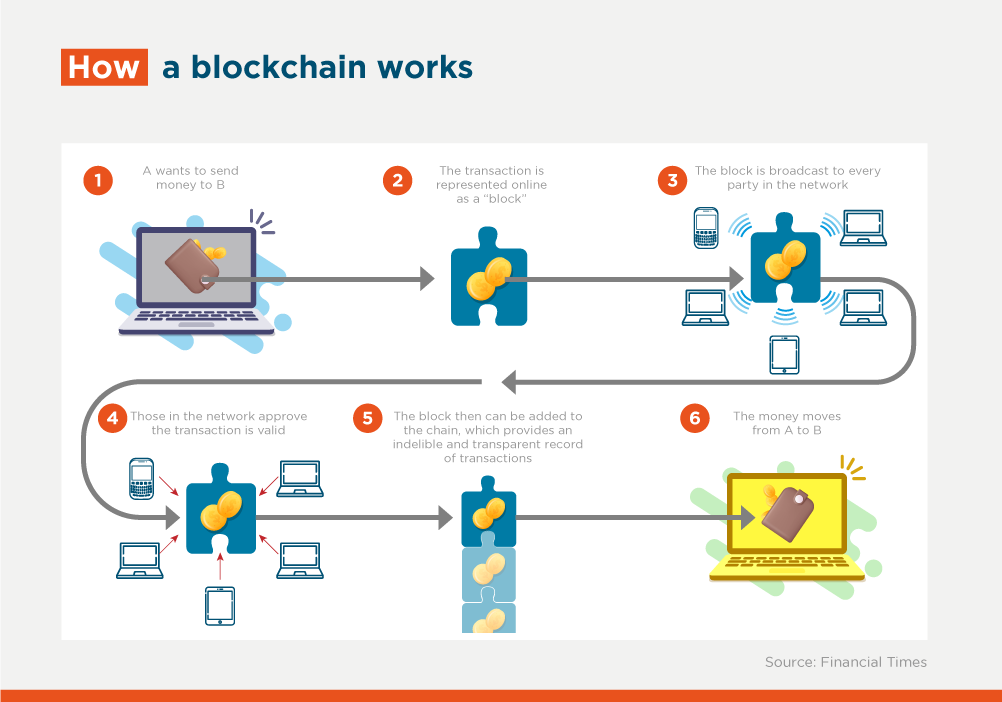Four Benefits Brought by Using the Blockchain in Capital Markets

The development and implementation of new technologies has increased during the last couple of years. Blockchain, which was introduced in 2008, continues expanding its application into different industries: automotive, financial services, government, media, retail, manufacturing, supply chain and others. The benefits of blockchain technology in debt capital markets are less well-known.
In simple terms, Blockchain is defined as “a shared, immutable ledger that facilitates the process of recording transactions and tracking assets in a business network…Virtually anything of value can be tracked and traded on a blockchain network, reducing risk and cutting costs for all involved.”
The benefits for capital markets are directly related to the blockchain’s nature and objective. Blockchain allows to share a complete and immutable dataset of information (such as pricing, performance, asset liquidity, issuance documents negotiation, etc.) creating a more transparent and fairer market-place for participants to price and transact securities:
- More accurate and complete information leads to better decisions (and helps attract more participants) - Investment decisions are based on available information, blockchain can improve the accuracy and reliability of information (immutable data) and make new information available faster (shared real-time) to all relevant parties (permissioned network participants). By having all historic records and real-time updates in one place, the blockchain reduces the need of crosschecks, ensures data’s integrity, and provides a more complete set of information to use in the decisions making process for financial transactions. When issuing bonds, the issuance process is made through one platform, to which all transaction participants have access, thus reducing both information asymmetries and duplication of processes.
- Reducing issuance costs – The process for obtaining regulatory approval, registering, issuing, subscribing, and servicing bonds involves multiple parties. Blockchain opens the opportunity to, on the one hand, decentralize the registration and custody of bonds by performing them directly on a blockchain platform. And on the other, to speed up the issuance and payments management through direct payment between issuers and investors. As everyone sees the same information, and it is updated and shared real-time, these processes can be performed automatically in the blockchain and be triggered upon compliance of certain conditions. Studies show that… “for the wider bond market, blockchain presents cost savings opportunities of more than 10x, reducing the need for intermediaries and enabling smaller projects to issue bonds”.
- Higher liquidity and larger investor base - Digital assets can be easily divided or fractionalized into very small units, making them easier to sell and transfer. The investment space for individual investors increases as they get access to bonds with lower nominal value and issuers gain access to a larger and atomized investor base.
- Monitoring – Blockchain can improve the reporting of use of proceeds in thematic bonds. Monitoring the flow of money and obtaining data on impact and results has proved difficult for many issuers. The use of blockchain may improve traceability of money and transparency in the reporting of impact. This is where blockchain can provide the most benefits and leverage from new technologies such as artificial intelligence and the internet of things. For example, energy generation and related information can be uploaded to the blockchain directly from the green projects, analyzed and interpreted by coding embedded in the blockchain, and immediately distributed real-time to investors.

Recently, the IDB Group (Inter-American Development Bank, IDB Invest, and IDB Lab) and Banco Davivienda Colombia launched a proof of concept for the implementation of blockchain technologies in the Colombian Capital Markets. On August 9, 2022, the IDB Group and Davivienda announced the successful issuance of the first blockchain bond in Latin America and the Caribbean. This pilot is first of its kind in the region and was implemented within the regulatory Sandbox of Colombia.
The bond, fully subscribed by IDB Invest, was for a total amount of COP$110 million. The regulatory authorization, registration, bond servicing and subsequent cancellation of the bond at maturity as well as the issuance, negotiation, and payments of the bond were made entirely in the blockchain, which allowed testing improvements in time and cost efficiencies in a complete trading cycle in the Colombian capital market.
Without a doubt, blockchain brings many benefits. How easy is it to implement in the region? It is important to note that LAC’s debt capital markets are at different stages of development and have specific characteristics. Blockchain can help increase market activity and improving transparency but it will require strong partnerships with local regulators and market players to ensure adequate regulations are in place to facility this process and reap all the benefits.
LIKE WHAT YOU JUST READ?
Subscribe to our mailing list to stay informed on the latest IDB Invest news, blog posts, upcoming events, and to learn more about specific areas of interest.
Subscribe



